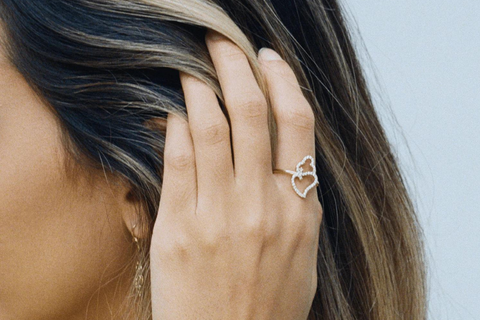Maybe you’re searching into the jewelry-making process? Or, perhaps you’re a curious individual with a thirst for learning? Or, you’d like to buy a piece of sustainable jewelry for everyday wear but the description uses all the fancy words? Whatever it may be, when thinking about what jewelry to get, or learning about the various aspects of jewelry, it’s always helpful to know some of the terminologies. So if you have been looking, look no further as we have a few of the most useful/practical jewelry terms to know related to jewelry and jewelry making.
Culet
Sounds odd doesn’t it? Almost like a cut of meat! Instead, this word means the tips of a diamond, whether sharp or dull, the tip of a diamond is a culet.
Caliper
Gives off the sense of an ancient term of times past, those times when we’d be writing this with a feathered pen. However, this tool is very much used for all sorts of gemstones today. It is used to measure the dimensions of a stone, especially useful in the process of jewelry making.
Facet
Oh, this one is…facet-nating! No? Okay, here is the definition: a plane of surface on any diamond or gem, for example, one of the cut’s flat sides would be a facet.
Crown
The top half of the diamond. Diamonds are usually made of crowns, and crowns are the top half of the diamond. So basically, it’s rightfully called the crown as it sits on the top of the jewelry piece.

Carat and Karat
Tomato, tomatoe? Nah, it’s a little deeper than that. You might’ve heard of this one a lot, we mention carats/karats here too, often sharing the weight or the purity of our jewelry pieces. Essentially, the carat is the unit describing the weight of jewelry and gemstones, while karat is specifically connected to measuring gold purity. 18K has some extra jazz to it now!
Table
Well, easy! A smooth elevated surface where all can eat. While that may be true for everyday life, on the diamond, it’s the flattest side of a diamond, the flattest facet. Makes sense though, considering tables have flat surfaces. It’d be interesting to clean a table on a table if you get what we mean.
Lab-Grown Diamond
Lab-grown diamonds are pure carbon diamonds in every single way, including their physical, optical, and chemical properties. Sometimes, lab-grown diamonds might be referred to as man-made diamonds, synthetic diamonds, engineered diamonds, or cultured diamonds. Check out a detailed article we did on those.
Clarity
In the context of jewelry, it measures to what degree a gemstone is without flaws, ahem, flawless. In the context of life, it measures how everything makes sense, but, overall, it’s good to have clarity whether for a diamond to look essentially flawless, or for things to be clear and make a lot of sense.
Cluster
Gather together a number of precious diamonds in close proximity, and you have a cluster. Similar to a cluster of nuts, or a cluster of cookies, clusters make things bigger and better often.

Halo
I can see your halo, halo… A setting that encircles a center gemstone with diamonds or gemstones. Similar to the halo ring around the smiling angel emoji, when a center diamond or gemstone is encircled with other diamonds or gemstones, they form a little halo around the main gemstone. Halo-setting diamonds are a great gift for your dearest loved ones!

